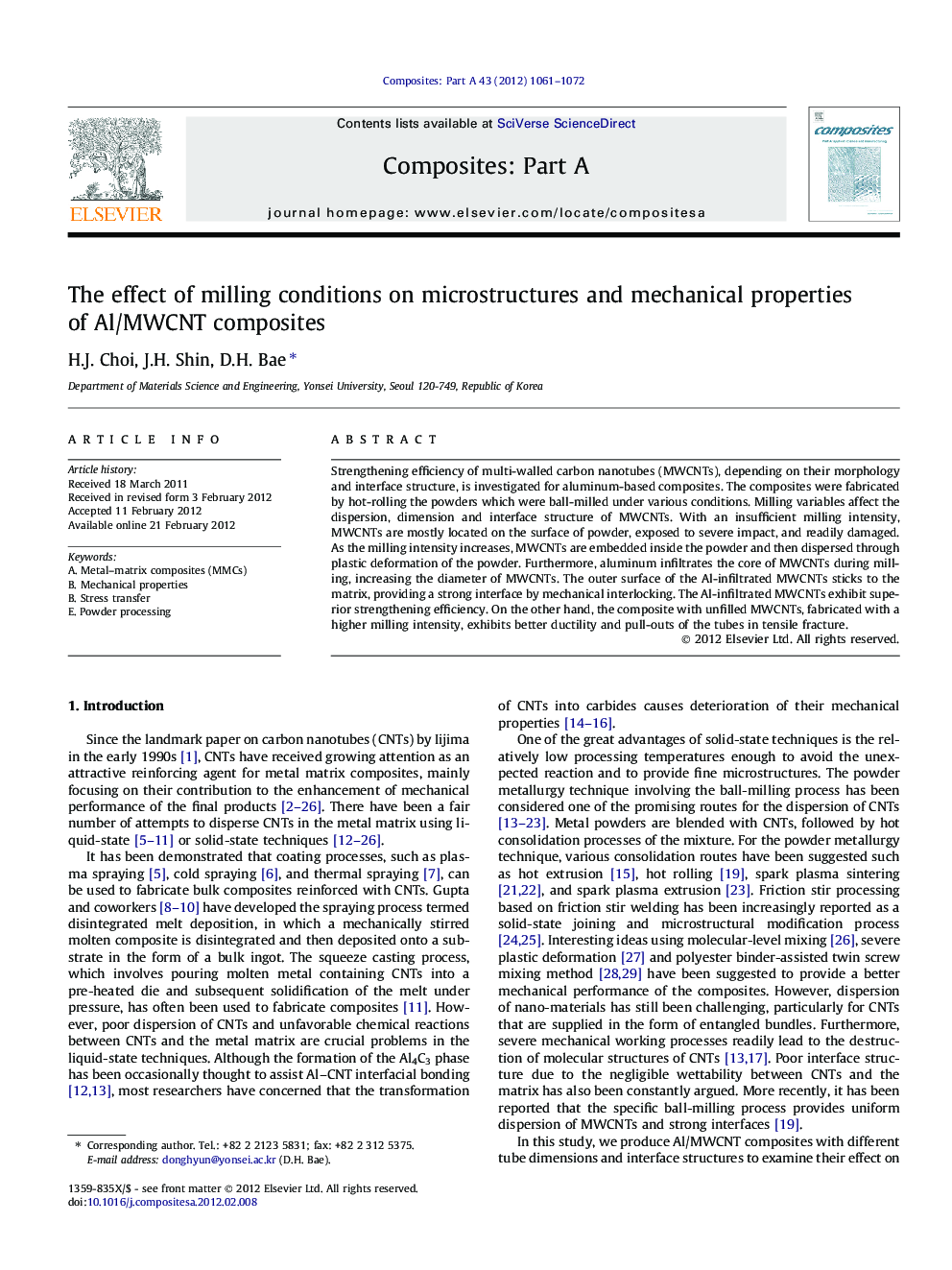| Article ID | Journal | Published Year | Pages | File Type |
|---|---|---|---|---|
| 1466439 | Composites Part A: Applied Science and Manufacturing | 2012 | 12 Pages |
Strengthening efficiency of multi-walled carbon nanotubes (MWCNTs), depending on their morphology and interface structure, is investigated for aluminum-based composites. The composites were fabricated by hot-rolling the powders which were ball-milled under various conditions. Milling variables affect the dispersion, dimension and interface structure of MWCNTs. With an insufficient milling intensity, MWCNTs are mostly located on the surface of powder, exposed to severe impact, and readily damaged. As the milling intensity increases, MWCNTs are embedded inside the powder and then dispersed through plastic deformation of the powder. Furthermore, aluminum infiltrates the core of MWCNTs during milling, increasing the diameter of MWCNTs. The outer surface of the Al-infiltrated MWCNTs sticks to the matrix, providing a strong interface by mechanical interlocking. The Al-infiltrated MWCNTs exhibit superior strengthening efficiency. On the other hand, the composite with unfilled MWCNTs, fabricated with a higher milling intensity, exhibits better ductility and pull-outs of the tubes in tensile fracture.
